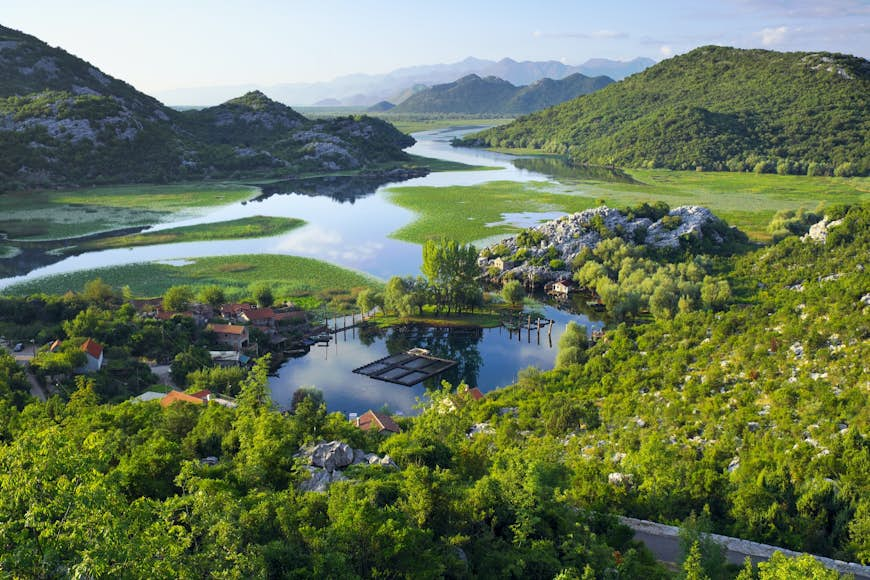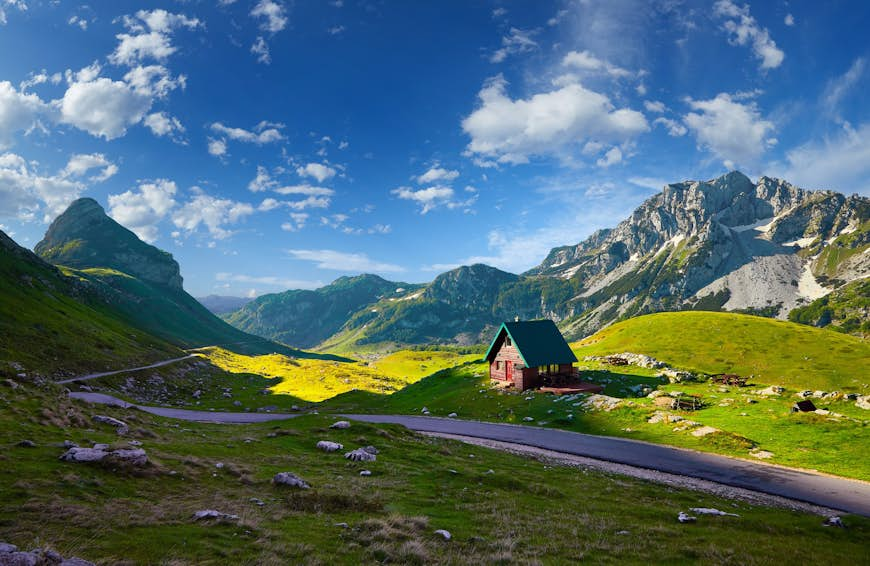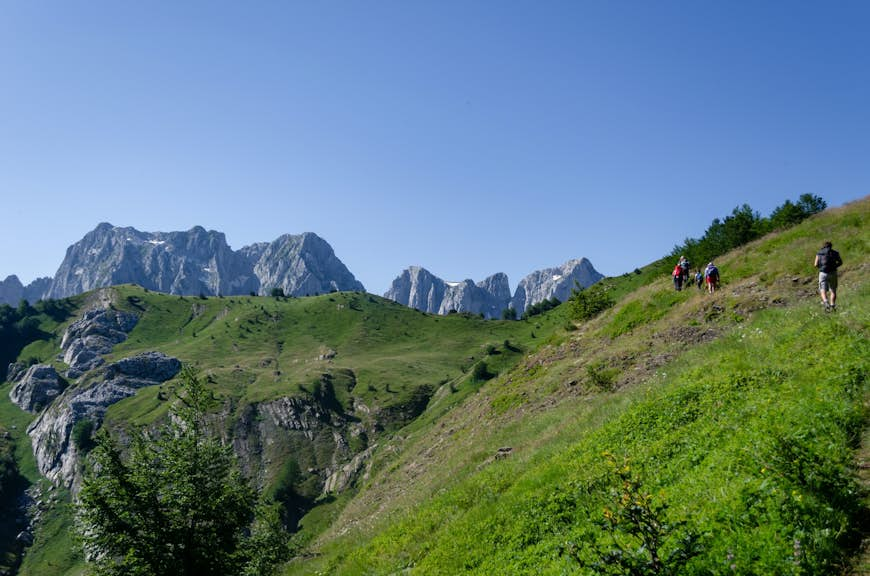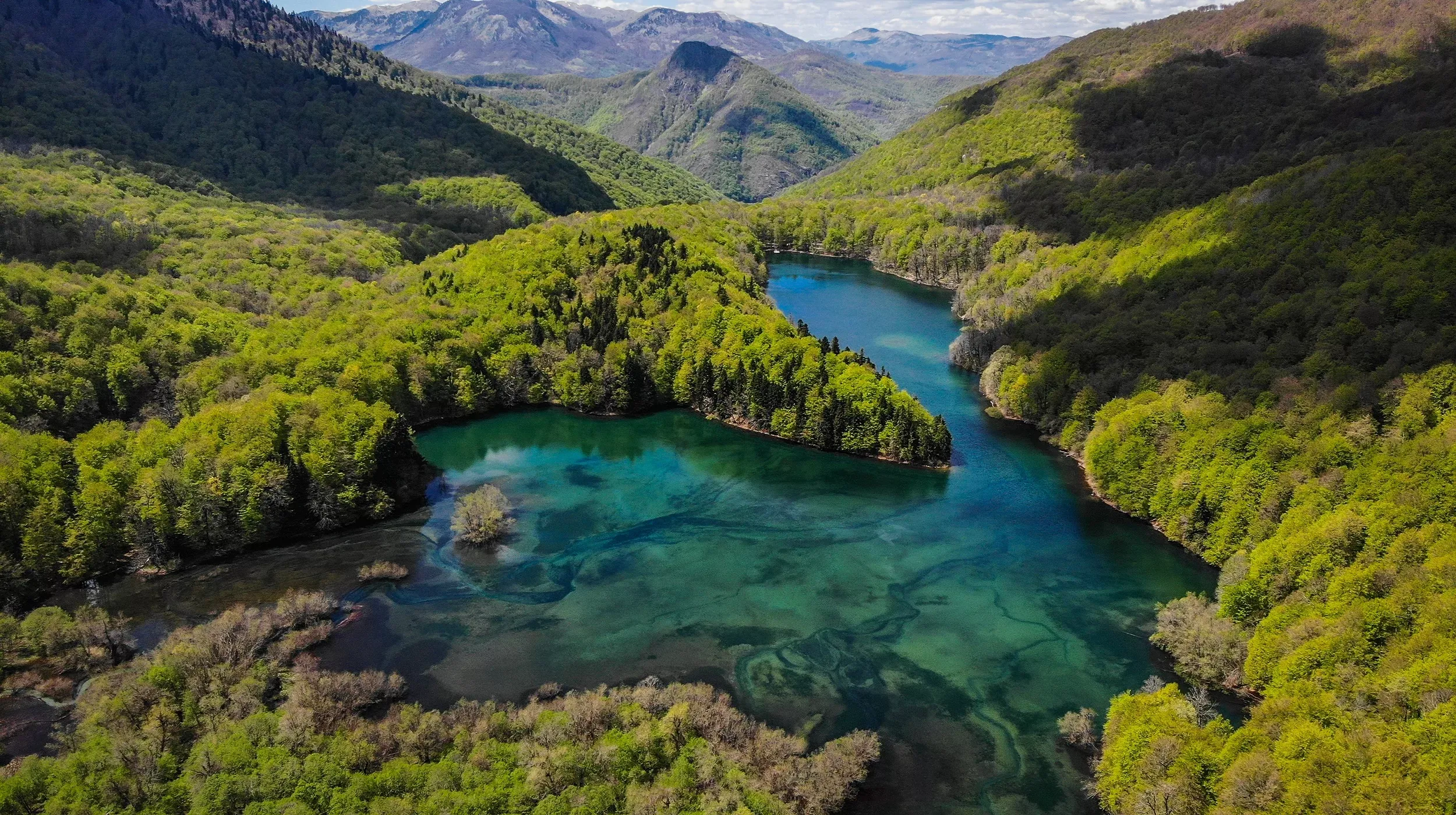Adventure your way through Montenegro’s national parks
There is much more to Montenegro than its gorgeous Adriatic coastline. Head inland and immerse yourself in this fascinating little country’s wild side, showcased in its five vastly different national parks.
Adventure your way through Montenegro’s national parks
Lovćen National Park
If you visit just one Montenegrin national park, this should be the one. Looming above the Bay of Kotor, Lovcen is the black mountain that gave Montenegro its name. For centuries, this karstic massif was the very crucible of Montenegrin culture – a rocky redoubt of resistance to the Ottomans, populated by fearsome warriors, clerics and poets – and it remains the nation’s heartland to this day. The old royal capital, Cetinje, is nestled on its slopes and is the perfect base for exploring – although the park also can be easily accessed from the coastal hotspots of Kotor and Budva.
Allow time to peruse Cetinje’s palaces and museums before heading into the park proper. There’s a visitor center in the hamlet of Ivanova Korita where you can gather information on Lovcen’s numerous hiking and mountain-biking tracks. Continue to the park’s most famous feature, the striking Njegoš Mausoleum, sitting at the top of its second-highest peak (5,436 feet). Gargantuan statues by acclaimed Yugoslav-era sculptor Ivan Mestrovic compete for attention with the extraordinary views, as the craggy landscape dissolves into the distance.
As you loop back, be sure to stop for a snack at the village Njegusi. As well as being the ancestral home of Montenegro’s Petrovic dynasty, it is famed throughout the region for its prosciutto, cheese and honey.

Lake Skadar National Park
Split between Montenegro and Albania, Skadar is the largest lake in the Balkans and one of the most important habitats for wetland birds in all of Europe. The entire Montenegrin side of the lake has been protected as a national park since 1983. Birdwatchers from around the world come here to spy the 270 species that shelter in its surrounds, including the endangered Dalmatian pelican and a globally significant population of pygmy cormorants.
Boats and kayaks can be rented from the lake’s main settlement, Virpazar, and from the National Park Visitor Centre across the causeway near Vranjina. Birdwatching expeditions can be combined with visits to a cluster of tiny islands which are home to medieval monasteries and the Ottoman-built prison fortress, Grmozur, once known as the Montenegrin Alcatraz. Or you can paddle up the sinuous Crnojevic River to the pretty historical village Rijeka Crnojevica. Alternatively, hire a bike to explore the tiny winemaking villages and ruined fortresses hidden within the lush hinterland.
The best beach is remote Murici, on the lake’s southwestern shore. It’s also fun to take a plunge in the river from the terrace of the floating restaurant at the village of Dodosi, or join the local larrikins diving off the bridge.

Durmitor National Park
The jewel in the crown of Montenegro’s national parks is mountainous Durmitor in the country’s untamed north. It is a highly dramatic landscape with around 50 peaks higher than 6,562 feet, dotted with 18 glacial lakes (known as gorske oci, or mountain eyes). It also embraces the Tara Canyon, a cleft in the limestone cut by the Tara River over many millennia, its forested walls reaching 4,265 feet at their apex.
Rafting is by far the best way to see the canyon, and numerous operators offer trips along the last 18km, where you will find most of the rapids – although you will have to book the classic two-day journey to visit the deepest part of the canyon.
In winter Durmitor is a major ski destination, offering the country’s most reliable snow cover and two ski centers: Javorovaca for beginners and Savin Kuk for more advanced skiers. In summer, the focus shifts to hiking and mountaineering. There are 93 miles of marked trails heading through the mountains, ranging from an easy two-mile stroll around the picturesque Black Lake to major alpine expeditions where a local guide is recommended.

Biogradska Gora National Park
Located within the Bjelasica mountain range, Biogradska Gora National Park protects an exceptionally lovely six square miles of virgin forest. From the park entrance, you can take a 2.2-mile trip on a tourist train to the vividly green waters of tree-lined Lake Biograd. Here you will find the main park infrastructure, including a campsite, cabins, rowboat and kayak rental, and a restaurant serving traditional Montenegrin mountain fare.
Take the easy 2.1-mile amble around the lake, and then inquire at the visitor center about the more challenging hiking and mountain-biking tracks through the surrounding mountains. In summer it is possible to take multi-day hikes staying overnight in katuns, the traditional wooden huts used by the region’s semi-nomadic shepherds. There are also glacial lakes to explore and several peaks above 6,500 feet, culminating in 7,018-foot Crna Glava (Black Head).

Prokletije National Park
For true wilderness, you cannot beat Montenegro’s newest national park, dedicated in 2009 to protect a 62-square-mile expanse of the Prokletije Mountains bordering Albania and Kosovo. This southernmost and highest section of the Dinaric Alps is surely one of Europe’s least-explored corners. Prokletije translates to ‘accursed,’ which says all you need to know about the treacherous and unforgiving nature of the terrain. If you want to push your limits in the extraordinarily beautiful, off-the-beaten-track wilderness, this is the place to come.
Yet visits to Prokletije need not be major expeditions. Start at the gateway town of Gusinje with a visit to its 17th-century Vizier’s Mosque and then take a half-hour walk to the beautiful Ali Pasha Springs, which bubble up from the karst at the foot of the mountains. On the way stop at the park visitor center, where you can gather information about more advanced hiking and climbing routes to suit your experience and abilities. It can also be a place to connect with local guides.
Looking for ideas for your trip?
See how others experienced their time in Montenegro. We would love hearing from you - share your Montenegro moments with following hashtag:


















